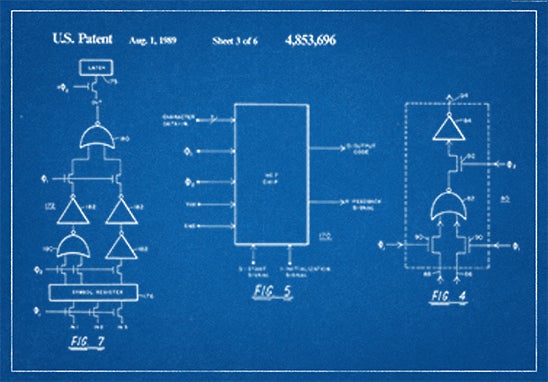For the seventh consecutive year, UCF has ranked in the top 100 universities in the world when it comes to securing patents.
UCF ranked 29th among public universities in the nation this year, up from 31st in 2018. Worldwide, UCF ranked 65th compared to 75th last year. The world rankings include public and private institutions. Patents are one indicator of a university’s success in bringing discoveries and inventions into the marketplace, where they can make a difference.
The rankings released today are compiled by the National Academy of Inventors and the Intellectual Property Owners Association. The groups come together to issue annual rankings as a way to highlight the important role universities play in discovery and bringing inventions to the market where people can benefit from the research conducted around the world.
The 2019 rankings were calculated using the number of utility patents granted by the U.S. Patent and Trademark Office. For patents assigned to more than one entity, credit is given to the first named entity. UCF has made the list every year since the rankings began in 2013. UCF secured 44 patents in 2019.
The University of California system as a whole ranked first with a total of 631 patents followed by the Massachusetts Institute of Technology (a private institution) which secured 355 patents. The University of Texas had 276. University of Florida, University of South Florida, Florida International and Florida State also ranked on the list.
The 44 patents secured by UCF in 2019 cover a broad range of disciplines from medicine and nanotechnology to power-grid restoration technology and biofuels.
“Our patent-ranking achievements are a credit to university researchers who are developing critical technological solutions with global impact and creating opportunities for meaningful collaborations,” said Svetlana Shtrom, director of the Office of Technology Transfer. “Our team brings these solutions to the marketplace by partnering with companies and entrepreneurs to transform innovative ideas into successful products.”
Among some of the inventions that led to patents in 2019:
Natural Killer Cells to fight Cancer
Lead researcher: Assistant Professor Alicja Copik, College of Medicine
Copik discovered a way to supercharge Natural Killer (NK) cells. These white blood cells kill virus-infected cells and cancer cells. Copik and her team developed a new NK cell-therapy platform, which has been licensed to Kiadis Pharma, a clinical stage biopharmaceutical company. The new approach utilizes specially designed nanoparticles to stimulate the NK cells. This stimulation increases the number of NK cells and enhances their cell-killing ability. The technology has been approved by the U.S. Food and Drug Administration to start Phase II clinical trials.
Marine Product to Fight Antibiotic Resistant Strains
Lead Researcher: Associate Professor William Self, College of Medicine
Self led a team that found that puupehenone, a marine natural product, can inhibit the growth of the bacterium Clostridium difficile (C. difficile). It is among the leading causes of hospital-acquired infections and can lead to life threatening colon inflammation. Although antibiotics are a common treatment, they are ineffective against antibiotic-resistant strains of the bacteria. The puupehenone compounds may also be effective against antibiotic-resistant strains of C. difficile.
Blending colors
Lead Researcher: Associate Professor Debashis Chanda, Nanoscience Technology Center
Chanda used nanotechnology to develop a new color-changing surface, tunable through electrical voltage. The technique allows for the whole red-blue-green spectrum simply by changing the voltage through the nanostructure. The discovery means more vibrant and realistic pictures on screens such as those on televisions or smartphones as well as potential use in wearable fabrics that could change color.
3D Printing Innovation
Lead Researcher: Research Associate Jack Stubbs, Institute for Simulation and Training
This patent is a core pillar of the burgeoning additive manufacturing patent portfolio coming out of the PD3D Lab at the Institute for Simulation and Training. Led by Stubbs, the team is focused on improving 3D printing whether it is the printer hardware, the software to run the printers, or the products and tools that can be printed with them. This patent is particularly important as it describes a method for designing parts with tunable physical properties. Simply put, complex shapes with a variety of different textures, rigidity, structures and colors are able to be printed in one part. This allows for the most realistic possible representation of a 3D printed part, allowing printing of human-like anatomy that looks and feels like the real thing.
Adaptive Power Grid Restoration
Lead Researcher: Amir Golshani ’17, College of Engineering and Computer Science
While a doctoral candidate, Golshani worked with professors Wei Sun and Qun Zhou on research pertaining to power grids. Golshani worked to develop an adaptive restoration decision support system to determine restoration actions both in planning and real-time phases and which would adapt to constantly changing system conditions. The system would help in times of blackouts or other disruptions to the energy grid to prioritize and accelerate repairs to restore power.
Inexpensive Biofuels
Lead Researcher: Research Professor Richard Blair, College of Sciences
This invention provides an efficient and inexpensive method to produce biofuels and specialty chemicals without using toxic or high-temperature chemical processes. Blair led the team that develop the hydrolysis technology that enables companies, such as biorefineries, to use “solid-to-solid catalysis” to break down a wide range of biomass materials, including materials with tough-to-break-down feedstock and other types of agricultural waste.





